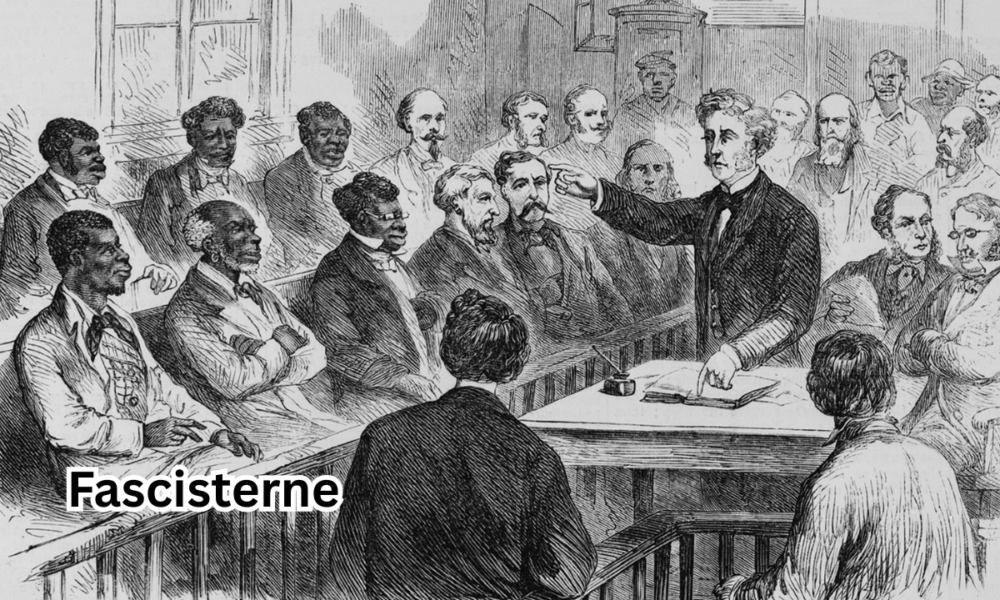Understanding “Fascisterne”: More Than Just a Word
What does Fascisterne mean?
The Danish word Fascisterne translates literally to “the fascists” in English. While it might instantly conjure images of World War II, authoritarian regimes, and political brutality, the term has a deeper, broader significance that continues to resonate today.
Understanding fascisterne isn’t just about remembering history. It’s about recognizing dangerous ideologies, analyzing political patterns, and staying alert to how these forces can shape modern societies. In this article, we’ll explore the rise, beliefs, and ongoing relevance of fascisterne—breaking it down in a way that’s both informative and easy to grasp.
Where It All Began: The Origins of Fascism
To grasp the meaning of fascisterne, we must trace its roots back to the early 20th century. The word fascism traces its roots to the Latin fasces—a bundle of tightly bound rods that symbolized collective strength and authority through unity. This symbol was later adopted by Benito Mussolini, the founder of modern fascism.
Italy: The Birthplace of Fascism
After World War I, Italy faced political instability, economic hardship, and national discontent. In 1919, Benito Mussolini—a former socialist journalist—channeled public unrest by founding the Fasci Italiani di Combattimento, a militant nationalist movement that vowed to revive Italy’s past greatness.
By 1922, Mussolini had risen to power through a mix of political strategy and threats of violence—most notably the “March on Rome.” Fascism soon became Italy’s official ideology: nationalist, authoritarian, anti-communist, and brutally suppressive of opposition.
Germany: The Rise of Nazism
In Germany, a similar—but even more extreme—movement took hold. The Nazi Party, led by Adolf Hitler, capitalized on economic collapse, bitterness over the Treaty of Versailles, and entrenched antisemitism. Though Nazism wasn’t identical to Italian fascism, it shared many core values and added a horrifying racial doctrine that culminated in the Holocaust.
While fascisterne originally described Mussolini’s followers, the term is often extended to include the Nazis due to their shared ideological roots.
Fascist Echoes Across Europe
Fascism wasn’t limited to Italy and Germany. During the 1930s and 1940s, comparable movements emerged throughout Europe:
- Spain: General Francisco Franco led a nationalist fascist regime after a brutal civil war.
- In Hungary and Romania, fascist parties gained significant influence, often bolstered by support from Nazi Germany.
- Scandinavia and the UK: Smaller fascist factions emerged, inspired by developments on the continent.
Despite regional differences, these movements shared common goals: centralized power, nationalism, suppression of dissent, and rejection of liberal democracy.
The Ideological Blueprint: What Fascisterne Believe
Though fascism can vary across regions, fascisterne typically align with a few defining beliefs:
1. Absolute Authority
Fascist ideology favors a powerful, centralized government—often embodied in a single leader—who exercises total control. Democracy is seen as weak and chaotic, while dissent is crushed through censorship, policing, and violence.
2. Ultra-Nationalism
National identity is glorified above all else. It often promote an idealized version of their country’s history and culture while targeting outsiders—immigrants, minorities, or dissidents—as threats to national purity.
3. Militarism and Glorification of Violence
Violence isn’t just a means to an end—it’s celebrated. It believe that conflict, struggle, and war are necessary to assert dominance and eliminate weakness.
4. Anti-Liberal and Anti-Leftist
Fascism is fundamentally opposed to liberal values like pluralism, civil liberties, and freedom of the press. It’s also fiercely anti-communist, viewing class equality and internationalism as dangerous ideologies.
Fascisterne in Scandinavia: A Regional Glimpse
Even Scandinavia, known today for democratic stability, wasn’t untouched by fascism.
Denmark During WWII
Under Nazi occupation, Denmark maintained a policy of cooperation, but fascist groups like the Danmarks Nationalsocialistiske Arbejderparti (DNSAP) existed. Modeled on the German Nazis, they never gained mass support, but they did influence events during the occupation. After the war, most were either imprisoned or faded into political irrelevance.
Norway and Sweden
In Norway, Vidkun Quisling notoriously aligned himself with the Nazis, heading a puppet government under their control. His name has since become a powerful emblem of deceit and political betrayal. Sweden had smaller fascist movements, with ties to German sympathizers, but they remained marginal.
After the War: The Collapse of Fascisterne
World War II’s end marked the dramatic downfall of fascist regimes. Mussolini was executed, Hitler committed suicide, and fascist parties across Europe were disbanded or outlawed. The world watched as the Nuremberg Trials exposed the horrors carried out in the name of fascism.
The Stigma That Followed
Post-war, It became a loaded, shameful label. The atrocities committed under fascist rule stained the ideology so deeply that it became synonymous with evil and tyranny.
Neo-Fascism and the Far-Right
Yet fascism didn’t disappear. Over the decades, new far-right groups began to repackage old ideas under new banners—often calling themselves “patriots” or “nationalists.” These neo-fascist groups sometimes mask their intentions in coded language, targeting minorities, questioning democratic norms, and reviving the xenophobic spirit of fascisterne.
In modern Scandinavia, while overt fascist parties are rare, some far-right movements echo their rhetoric, particularly on issues like immigration and cultural identity.
Modern Usage: When We Say “Fascisterne” Today
Labeling someone as part of fascisterne today carries serious weight. It implies support for oppression, bigotry, and authoritarianism. However, the term is sometimes misused in political arguments, diluting its meaning and historical gravity.
Why Words Matter
Not every right-wing group is fascist. And not every authoritarian leader fits the mold. Misusing the term fascisterne can cloud judgment, stoke division, and ultimately make it harder to identify the real threats.
Education as Prevention
The most effective way to resist fascist ideology—both past and present—is through education. When people understand how fascism takes hold, they’re more likely to recognize warning signs and defend democratic values.
Conclusion: Why Understanding Fascisterne Still Matters
The story of fascisterne is more than just a relic of the past. It’s a warning—a testament to what happens when fear, hate, and unchecked power collide. Though Mussolini and Hitler are long gone, the ideologies they championed still echo in today’s politics.
By learning about the origins, beliefs, and consequences of fascisterne, we equip ourselves to challenge extremism and uphold the values of freedom, equality, and justice. The world has changed, but the risks remain. And so does our responsibility to stand against tyranny in all its forms.







